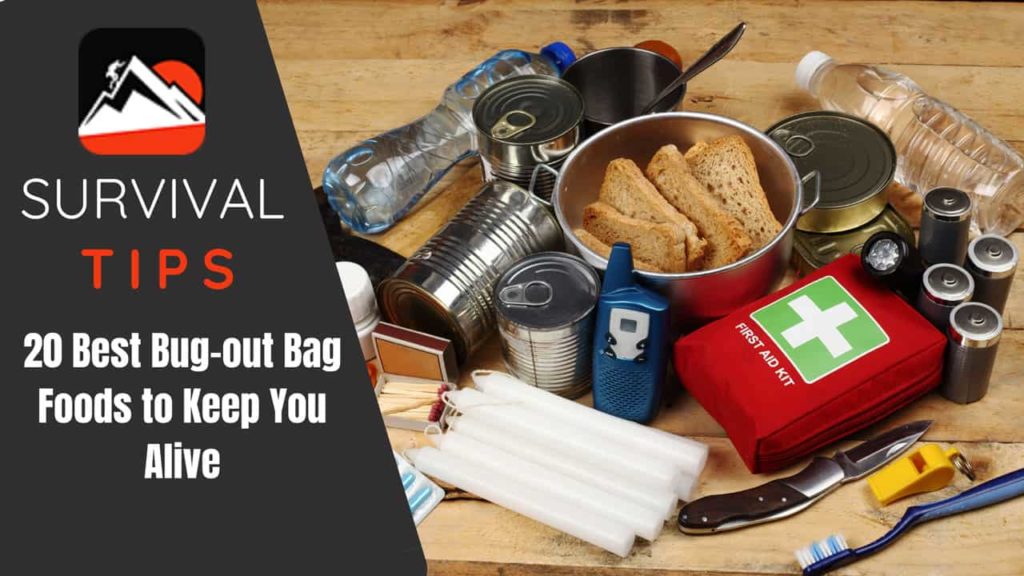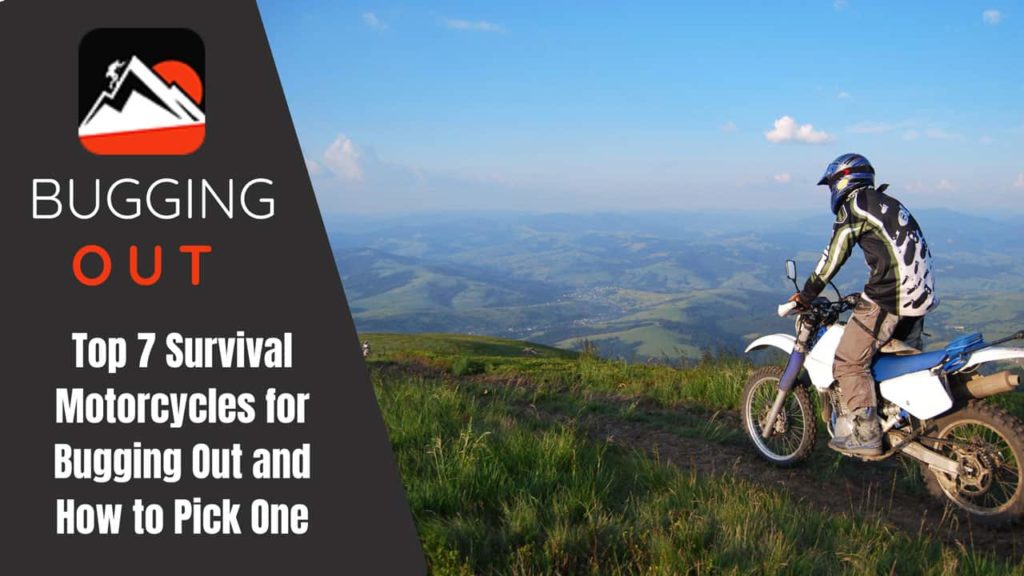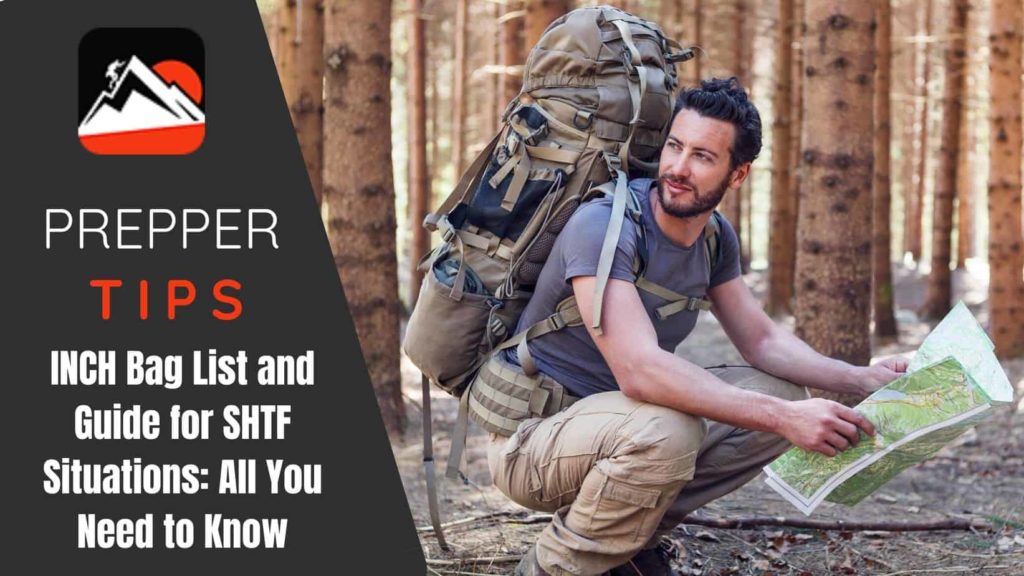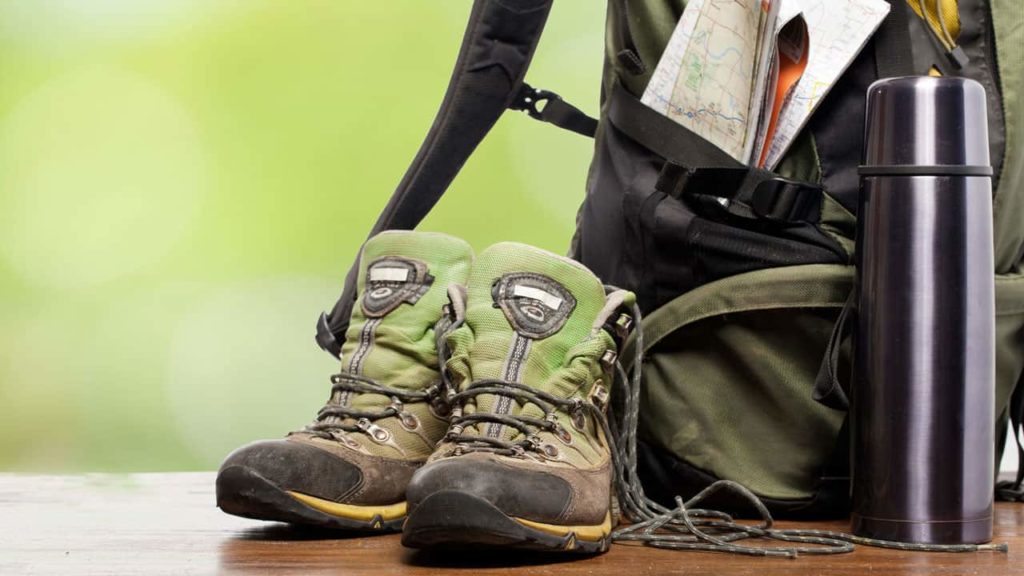Contents
The importance of food in your bug-out bag cannot be overemphasized. In fact, humans can only last for 3 weeks without food which by the way is accurate if we’re talking about a sedentary lifestyle. In the worst of times and fighting to survive, you burn way more calories than usual.
Think about it.
And whether you’re bugging out to avoid an imminent natural disaster or escape civil unrest, having the survival essentials with you is everything. That includes food, water, first aid kit, gears (knife, water filter, fishing kit, etc.), and shelter.
Now, you can carry them individually or randomly cram everything in your trunk. But I’ve got a better idea… keep them securely organized in a pack/bag. That’s where a go-bag or bug-out bag (‘BOB’) comes in ⸺ something you can grab and go when SHTF.
With that said, the questions now might be:
“What food should go into my bug-out bag? How much food do I need to carry? And with a lot of food options on the market, which are the best?
Well, you’re in for a treat. Because today, we’re gonna discuss what to look for in BOB foods plus some of the best food you can include in your bug-out bag. By the end of this guide, you’ll have a better understanding of how to set up your own bug-out bag in terms of the food that goes in it.
Sounds good? Let’s get to it!
You might also find interesting our article about bugging in during an epidemic.
What to look for in an ideal bug-out bag food
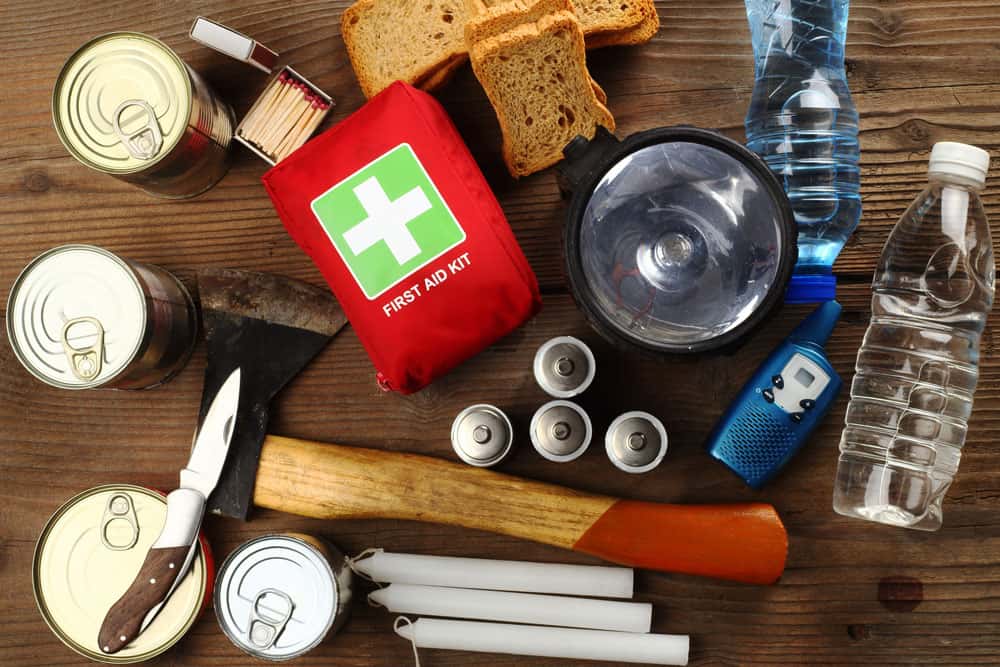
With the market overflowing with food options, knowing which items are ideal for bugging out and which items should stay on the shelf will save you big time. So, to help you choose smarter and not fall into marketing shenanigans, here are some things you need to consider.
Nutrients
When searching for the best bug-out bag foods, nutrients should be one of your top priorities. Without it, it doesn’t matter what the situation is, your body will shut down in no time. So, don’t discard the good stuff ⸺ vitamins, minerals, fiber, etc.
Read the nutrition facts and ingredients to make sure you’re getting healthy products, not chunks of junks.
Weight to calorie ratio
In a survival ordeal, every juice should be worth the squeeze. Thus, look for foods with the highest calories in the least possible weight. Know your required calorie count and see that the calories of your food items hit the mark without weighing you down.
Ask yourself, “With all the weight of your food supplies combined, can you carry it for the long haul?” And remember, we’re not just talking about meters but miles (let alone in an uphill rocky terrain).
Shelf life
When bugging out, you never know how long you’ll be out there before you can procure food or get to your bug-out destination. All you can rely on will be all you’ve got in your bug-out bag. Hence, choose foods that don’t expire or go stale fast (like raw fruits).
Check for the item’s expiration date and follow the food storage requirements.
Preparation
Convenience and efficiency are crucial in an emergency situation. You’ll have to deal with challenging tasks ⸺ don’t make food preparation be one of them. Go for foods the require minimal effort and resources. Foods you can just add hot water to, cook in a small fire (like a portable stove) for few minutes, or just eat right out of the packaging.
Taste
The last thing you want your emergency food to be is something your tongue can’t bear and end up chucking it. Food should boost not only your energy but also your morale through mouth-watering meals. So, choose food with a taste you’re familiar with and enjoy (or can tolerate at least).
Cost
As important as it is, food is not the only thing you need in your pack. There’s water, shelter, tools, and other essentials you need to consider. Therefore, it only makes sense not to break the bank in food alone. Know that expensive doesn’t always mean high-quality and cheap doesn’t always mean junk. Be smart.
Do your own research, read the reviews, and check the product/company links, or email them if necessary.
Water Consumption
If anything is more important than food, that is water (there’s air, but you get the point). And every drop counts when SHTF. In choosing your bug-out bag foods, go for items that won’t make you thirsty easily like crackers and salty foods. Also, see to it that such food won’t require a lot of water to cook.
How much food should go into your bug-out bag
Now that you’re a better consumer who knows what to consider when buying bug-out foods, let’s tackle the amount. How much is too much and how little is too little?
When you bug out, you’ll have to get from point A to point B in the most efficient way. But here’s the tricky part ⸺ you never know what lies in between. Although you may have a predetermined route, things could change quickly and could be for the worse. Highways get jammed, bridges collapse, and your car could break down. In which case, you’ll have to take a longer route or leave your car and travel by foot.
Are you starting to see the picture?
Thus, your food supply should not be too much that you can barely carry it but not too little that you’ll starve to death before reaching your destination. To simplify it for you, here are 3 things you need to consider: distance, time, and your daily calories.
Distance
How far is your bug-out refuge from your location? In case you’ll have to take different routes, what’s the estimated total distance?
Time
How long will it take for you to reach (both by car and by foot) your bug-out refuge? When worse comes to worst, you might get stuck on your way ⸺ consider delays.
Daily calorie need
To know your optimal calories per day, use a calorie calculator. Enter your body weight, height, age, gender, and activity (since you may have to travel by foot, set activity to “very active” or “extreme”) into the equation.
We also recommend to read our article about creating a family emergency plan.
What goes in a 72-hour bug-out bag
Once you’ve figured out your magic numbers, time to do the math ⸺ trust me, it’s not rocket science. First, the distance will determine the time or duration of your travel in days. Then, multiply the number of days by how many calories per day you’ll need.
Do you follow? Let’s see it in action…
Let’s say you need 4,000 calories per day and the longest route will take you around 3 days (72 hours). In that case, what goes in your 72-hour BOB should be food totaling 12,000 calories (4,000 x 3). That’s just you (one person). If you’ve to carry food for your family as well, just do some addition. The good thing about this is that you can use it to help other people set up their bug-out bags too.
Best bug-out bag foods
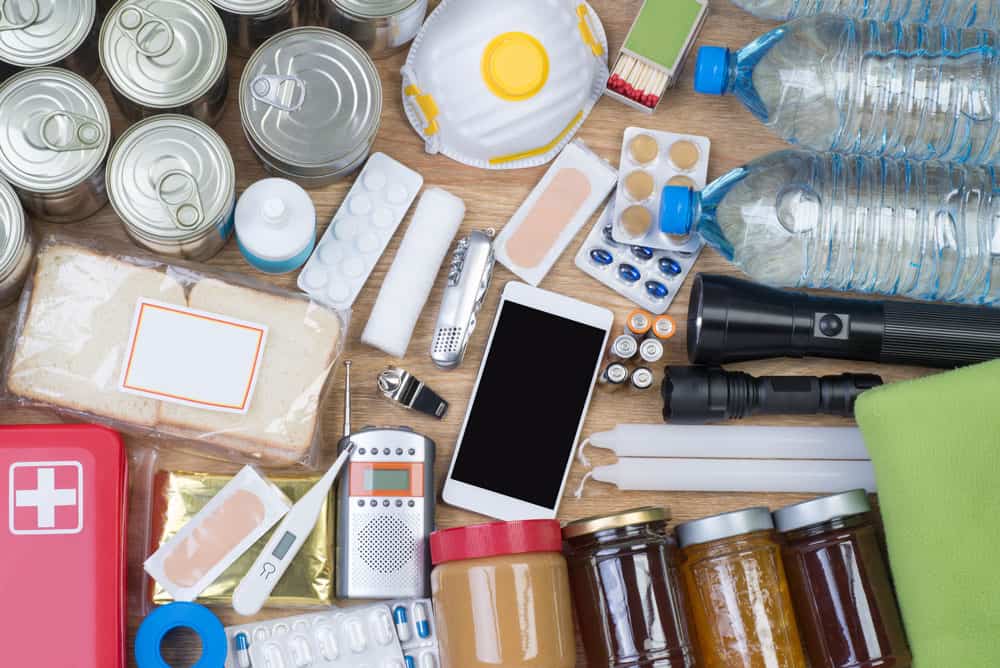
Whether you’re planning to bug out for 72 hours (you never know though) or indefinitely, shopping for food can be overwhelming. So, to help you narrow down the list, here are some of the best that will help you survive.
1. Meal replacement bars (protein bars)
Calorie to weight ratio, you’ll never go wrong with these. It’s packed with high protein (as its name implies) and calories. No wonder it’s one of the favorite snacks for hikers and athletes alike. The best part? They’re ready to eat on-the-go and barely take up space in your bug-out bag.
2. Chocolate bars and other chocolate products
Chocolate is a “fighting food”. Did you know that chocolate is a staple of military rations during World War II? That’s right. Soldiers back then would consume chocolate in hot beverages or eat chocolate bars in the field. They benefitted from it while going through the worst of times. Surely, so can we.
Just like meal replacement bars, chocolate bars are pocket-sized high-energy snacks. They’re high in sugar and caffeine which are both known to boost energy. Plus, they taste so good they boost your morale. Just observe moderation though.
3. Nuts or a mix of them
You’ll be nuts not to include nuts in your bug-out bag. They’re high in nutrients and healthy fats which are good not only for the body but also for the brain (they’re the best brain foods out there). To preserve them, you can also turn peanuts into peanut butter (more on that later).
4. Dried fruit
Raw fresh fruits are one of the healthiest foods in the world. However, you have to consume them immediately. The solution? Dry them. And even after dehydration, they still pack a punch in terms of health benefits.
5. Granola bars or meal replacement bars
If you want to take all the foods aforementioned but don’t have time to collect or want to save even more bag/pack space, granola is for you. They’re usually a mix of chocolate, dried fruit, seeds, nuts, honey, coconut, and oats. And if you’re to read those ingredients again, all are highly nutritious foods packed in small packaging. So, bag some.
6. Peanut butter
As mentioned earlier, peanut butter is great survival food. It’s packed with calories (192 calories per 2 tbsp), vitamin B-6, and carbs. And even better if you can get your hands on natural peanut butter you’ll benefit from its rich healthy fats (that’s energy for you). Unopened peanut butter can last for up to 9 months so definitely add it to your bag/pack.
7. Canned goods
Foods stored in a can have a few years to decades of shelf life. How good is that? That’s because canning is one of the best preservation methods out there.
And they are widely available. Whether you want tuna dipped in Italian tomato sauce or something rare like a tender juicy spiny bat-eater bullfrog, chances are it’s canned. Take note, however, that cans are metal (usually tin) and with all their content, they could weigh a lot ⸺ make sure it’s worth it.
8. Beef jerky
If you’re a meat-lover but don’t wanna bring along raw wet meat, or don’t have time to preserve them, don’t worry. You’re not missing out on anything. Introducing beef jerky or dried beef. The Native Americans and other ancient civilizations smoke-dried not just beef but every animal meat they hunted. And if through such method they survived the wintertime and for generations, so can we.
Jerkies usually last for a year at least (the drier, the longer it will last). What’s more? They’re lightweight and don’t require cooking. Add them to your meals, why not?
9. Freeze-dried food
Moisture is the culprit for food spoilage. And by removing it, food shelf life is drastically prolonged. Dehydration only removes around 90% of moisture while freeze-drying removes about 98%. Freeze-dried food can last 25 to 35 years and they’re more lightweight due to lesser water content.
So, if you want to pack lightweight meals that last for decades, there’s a lot of freeze-dried foods to choose from. Great brands like Mountain House and Wise Company have great freeze-dried foods you might wanna check out.
10. Honey pouches/packets
Talking about long shelf life, no food beats honey. Did you know that it never goes bad? Yes sir! In fact, archeologists have found 2000-year old jars of honey in Egyptian Tombs that were still pristine & edible. The reason? Pathogens can’t contaminate honey due to its anti-bacterial properties.
Therefore, pack some honey in your BOB ⸺ will be worth it more than a lifetime. You can drink it with your favorite tea, or as a natural sweetener and toppings to your meals.
11. Electrolyte powders
Have you ever noticed tired athletes rest and drink something in between rounds or quarters? Was it water? Maybe. But they need more than just water to rehydrate fast and get back into action. Welcome to the science of electrolytes. Gatorade, Powerade, and other sports drinks you know all contain electrolytes.
Electrolytes are crucial in balancing the fluids in the body. Now, you can either bring along liters of sports drinks (prepare to endure a heavy load) or… just get yourself electrolyte powders. They’re available in bottles and sachets/pouches. So, quench your thirst without using up too much water by mixing these into your drinks. And since it’s a powder, you won’t even notice it’s there till you need it.
12. Protein powder
Protein powders come in a lot of forms (whey, soy, casein, etc.) and packaging like bottles and pouches. And nope, they’re not just for those who want to build humongous biceps. If anything, they’re for everyone because protein is the building block of our muscles (our entire body basically).
So, why not include some protein pouches in your bug-out bag and harness its life-saving benefits? Take it as a supplement to meat and fish (which are scarce during SHTF). Mix it with water to make a protein shake, add it to your cereal meals, etc.
13. Instant oatmeal
Oats are some of the healthiest grains on the planet. They’re a great source of essential minerals, vitamins, and fiber. From lowering blood sugar levels and cholesterol to helping relieve constipation, oats have got your back. It’s easy to prepare. Just pour hot water and enjoy the healthy benefits that will help you survive out there.
14. Instant mashed potatoes
Potatoes contain a wealth of health benefits such as potassium, vitamin C, fiber, B vitamins… the list goes on. It’s even a universal food. Amazing, right? And in an emergency situation, mashed potatoes are a lifesaver. Other than that, they last fairly well at about 12 to 18 months at room temperature.
15. Ramen, instant noodles, and any dry pasta
As long as you have a metal container (or foil packs) plus the means to start a fire, heating water is no problem. Although you can boil water for decontamination, why stop there? Why not savor some flavorful meals? Pack some noodles in your BOB and boost your morale by enjoying hot ramen in the coldness of the night. They’re easy to prepare and packs a lot of calories.
16. Instant rice
While regular rice requires about 20 minutes to cook, instant rice only needs 1-7 minutes. That’s because it’s been pre-cooked then dehydrated. Thus, if you don’t want to carry regular milled rice pouches in your BOB, then consider its lighter and hassle-free counterpart.
17. Pop-tarts
Have kids to bug out with? Then you might wanna consider including some pop tarts as snacks in your food items. Although they are made of mostly artificial sugar, they can provide a quick boost of energy levels (temporarily). Kids love them so consider it as a sweet treat to keep them occupied.
18. Candy
According to a study from the Harvard School of Public Health, people who regularly eat candy live longer than those who don’t. Isn’t that something? The secret lies in the power of sugar. Other studies prove that consuming sugar makes people persevere difficult tasks, focus better, and restore willpower. Be careful though, as you might get diabetes when overdone.
So, what’s the point? One word ⸺ survival. Other than giving us a quick boost of energy, all the benefits mentioned are critical when you’re dealing with a predicament. Hence, add a pack of candy (Tootsie rolls, M&M’s, etc.) to your BOB. The power of sugar will help you survive.
19. Food tablets or multivitamins
This is by far the easiest way to get your daily dose of calories and nutrition. No cooking. No preparation. Heck, you don’t even have to chew (for non-chewable). Just pick a tablet/capsule and swallow it along with water. Easy peasy.
Just know that, unless it’s all you have, food tablets should never replace real food or regular meals. They should be considered as “supplementary” to foods in your bag.
20. Pemmican
Pemmican is dried, lean meat pounded fine and mixed with melted fat. And this is the ultimate survival food for centuries, particularly by the Native Americans which was soon adopted by Arctic explorers. Even without refrigeration, it can last for a few years (even decades).
So, if want food packed with calories and protein that’s nothing short of extraordinary which helped masters of survival in the past thrive, then pemmican should be in your survival meals.
Wrap up
With the right bug-out bag setup and the survival foods in it, any ordeal can be manageable. So, while the grid is up, start mustering your food supply. Worst-case-scenarios strike when least expected without prior notice.
And when it does and you’re out there trying to survive, you don’t want your next meal to be your last, do you?

